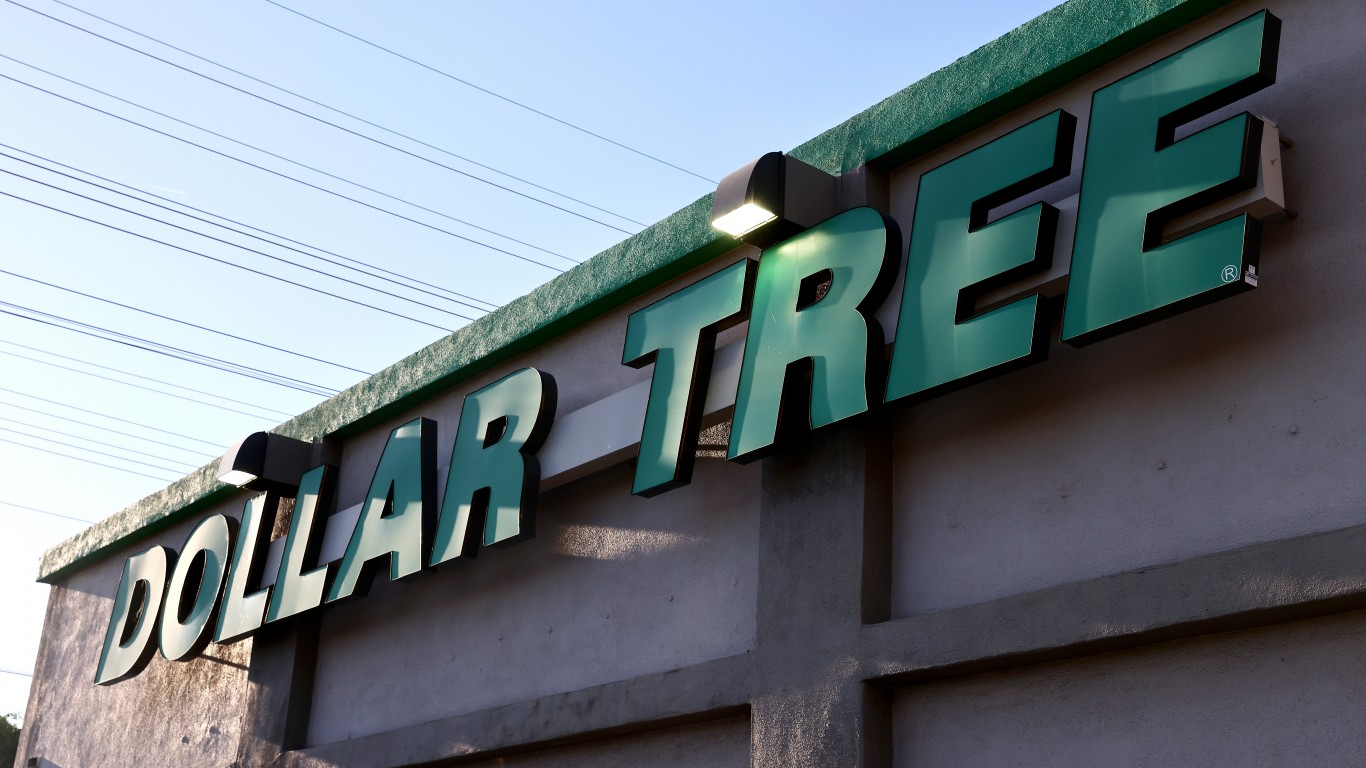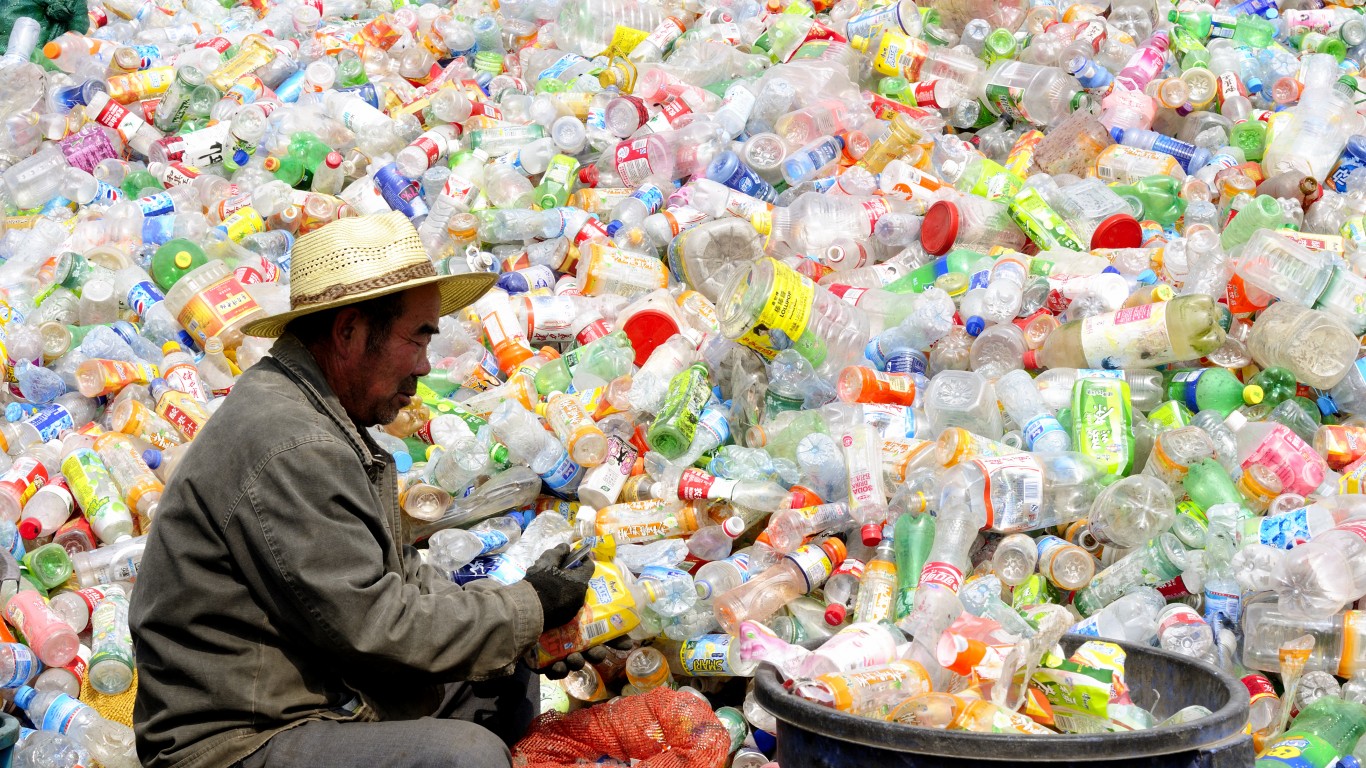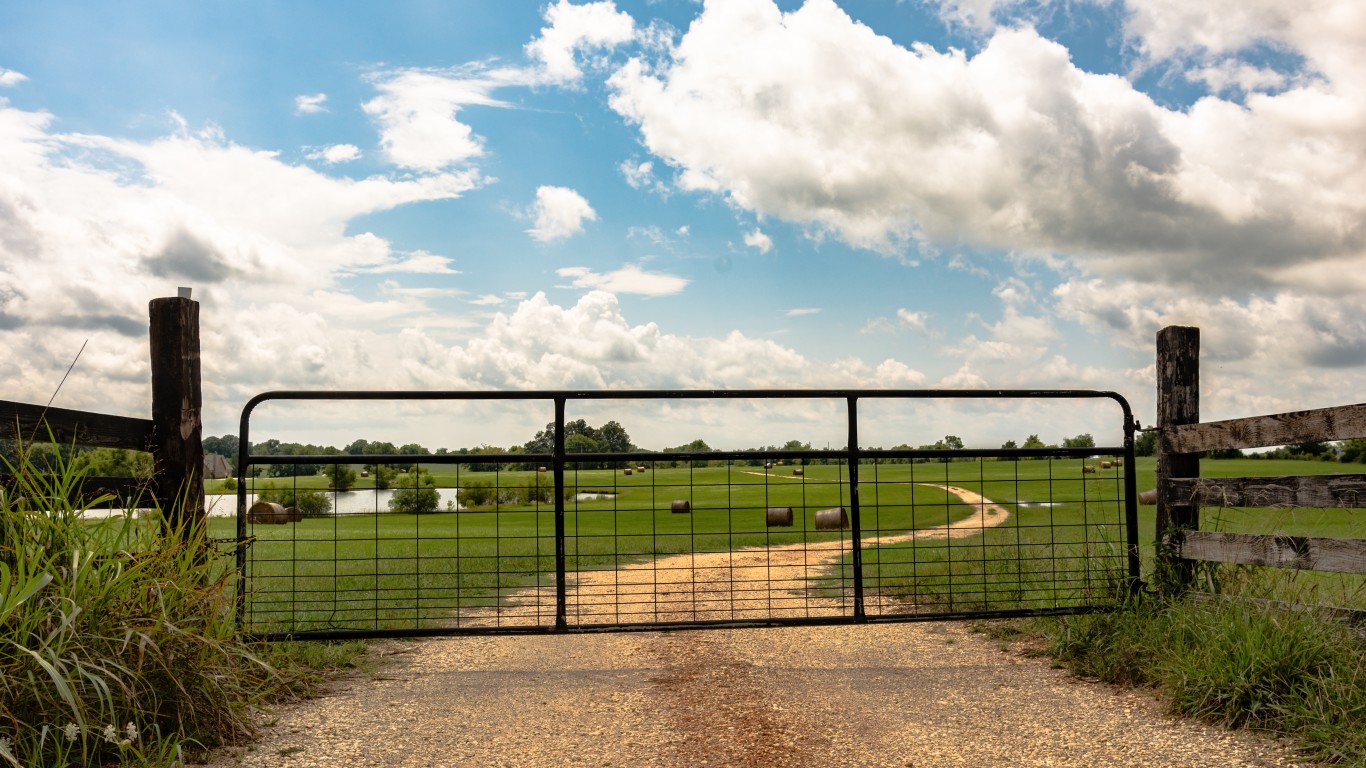
Because COVID-19 is an airborne virus, schools across the country temporarily shuttered or taught remotely to stop the spread of the respiratory illness. Even after schools opened, many schools required students to continue wearing masks, though mask mandates are disappearing rapidly.
Yet even without the danger of a contagious virus, school air quality in some states is dangerous – potentially exposing children not only to viruses but also to harmful toxins that may ultimately have equally serious effects on their health.
To identify the states where public schools have the highest concentrations of toxic air hazards, 24/7 Tempo reviewed the average toxic air hazard data in the report, “The 50 Schools in America With the Most Toxic Air,” by playground equipment supplier AAA State of Play.
The report used PERI Toxic Hazard Scores, calculated by the Political Economy Research Institute at the University of Massachusetts Amherst. The analysis includes only currently operational regular public schools for pre-K-12 and does not cover charter, alternative, private, or adult education institutions. The scores are based on the concentration of air toxins in each 810-by-810-meter (2,657-by-2,657-foot) grid cell within 50 kilometers (31 miles) of each facility, scaled to take into account the toxicity weight of each chemical. (Each state’s average public school spending per pupil was obtained from “U.S. Public Education Spending Statistics,” a report published March 15, 2022. Poverty statistics came from the U.S. Census Bureau’s 2020 American Community Survey.)
According to the PERI report, all the chemicals measured are hazardous, but their toxicities vary greatly. Lead or lead compounds permeated schools in seven states, making it the top toxin. Nickel came in second at six. Exposure to high amounts of lead can damage the central nervous system and brain in young children, leading to behavioral disorders and learning disabilities, according to the World Health Organization. Nickel exposure can damage the kidneys, lungs, and stomach, and may cause cancer. (Not just schools but whole areas have been shown to have high levels of airborne toxins. These are 23 places where industrial air pollution is so bad it causes cancer.)
Click here to see the states where schools have the most toxic air
The national average toxic hazard score at schools across the United States is 4,512. Kansas and Delaware had levels under that threshold, but were still fairly high at 4,110 and 4,428, respectively.
Schools in Oregon topped the list with an alarming score of 17,203. The toxin most prevalent in its schools is formaldehyde, a colorless, flammable gas. Found mostly in pesticides and building materials, formaldehyde has a strong odor. Excessive exposure to it causes eye, skin, and throat irritation and it’s been implicated in some cancers.
With a renewed focus on air quality in schools following the pandemic, states may now take measures to improve what children breathe during school hours. What about after school? Try these 20 tips to improve air quality at your home.

17. New Jersey
> Avg toxic air hazard score: 4,563
> Top chemical affecting schools in the state: Lead compounds
> Avg public spending per pupil: $20,630 – 4th highest
> Poverty rate: 9.7% – 6th lowest
[in-text-ad]

16. Virginia
> Avg toxic air hazard score: 4,577
> Top chemical affecting schools in the state: Lead compounds
> Avg public spending per pupil: $12,905 – 23rd highest
> Poverty rate: 10.0% – 10th lowest

15. Missouri
> Avg toxic air hazard score: 5,023
> Top chemical affecting schools in the state: Nickel
> Avg public spending per pupil: $11,249 – 18th lowest
> Poverty rate: 13.0% – 19th highest

14. Kentucky
> Avg toxic air hazard score: 5,329
> Top chemical affecting schools in the state: Nickel
> Avg public spending per pupil: $11,397 – 20th lowest
> Poverty rate: 16.6% – 5th highest
[in-text-ad-2]

13. Illinois
> Avg toxic air hazard score: 5,652
> Top chemical affecting schools in the state: Manganese
> Avg public spending per pupil: $17,340 – 8th highest
> Poverty rate: 12.0% – 25th lowest

12. Alabama
> Avg toxic air hazard score: 5,739
> Top chemical affecting schools in the state: Lead compounds
> Avg public spending per pupil: $10,116 – 13th lowest
> Poverty rate: 16.0% – 7th highest
[in-text-ad]

11. Indiana
> Avg toxic air hazard score: 6,301
> Top chemical affecting schools in the state: Lead compounds
> Avg public spending per pupil: $10,019 – 12th lowest
> Poverty rate: 12.9% – 20th highest

10. West Virginia
> Avg toxic air hazard score: 6,730
> Top chemical affecting schools in the state: Lead compounds
> Avg public spending per pupil: $11,757 – 23rd lowest
> Poverty rate: 17.1% – 4th highest

9. Arkansas
> Avg toxic air hazard score: 6,906
> Top chemical affecting schools in the state: Nickel
> Avg public spending per pupil: $10,345 – 15th lowest
> Poverty rate: 16.1% – 6th highest
[in-text-ad-2]

8. Pennsylvania
> Avg toxic air hazard score: 7,397
> Top chemical affecting schools in the state: Lead compounds
> Avg public spending per pupil: $17,142 – 9th highest
> Poverty rate: 12.0% – 24th lowest

7. Connecticut
> Avg toxic air hazard score: 7,921
> Top chemical affecting schools in the state: Chromium compounds
> Avg public spending per pupil: $21,346 – 2nd highest
> Poverty rate: 9.8% – 8th lowest
[in-text-ad]

6. Texas
> Avg toxic air hazard score: 10,200
> Top chemical affecting schools in the state: Nickel
> Avg public spending per pupil: $9,613 – 7th lowest
> Poverty rate: 14.2% – 12th highest

5. Nevada
> Avg toxic air hazard score: 10,830
> Top chemical affecting schools in the state: Lead
> Avg public spending per pupil: $8,915 – 4th lowest
> Poverty rate: 12.8% – 23rd highest

4. Ohio
> Avg toxic air hazard score: 11,752
> Top chemical affecting schools in the state: Manganese compounds
> Avg public spending per pupil: $13,805 – 18th highest
> Poverty rate: 13.6% – 16th highest
[in-text-ad-2]

3. Tennessee
> Avg toxic air hazard score: 12,850
> Top chemical affecting schools in the state: Nickel
> Avg public spending per pupil: $9,546 – 6th lowest
> Poverty rate: 14.6% – 10th highest

2. Louisiana
> Avg toxic air hazard score: 14,781
> Top chemical affecting schools in the state: Hydrogen sulfide
> Avg public spending per pupil: $11,691 – 22nd lowest
> Poverty rate: 18.6% – 2nd highest
[in-text-ad]

1. Oregon
> Avg toxic air hazard score: 17,203
> Top chemical affecting schools in the state: Formaldehyde
> Avg public spending per pupil: $11,340 – 19th lowest
> Poverty rate: 12.4% – 25th highest
Are You Still Paying With a Debit Card?
The average American spends $17,274 on debit cards a year, and it’s a HUGE mistake. First, debit cards don’t have the same fraud protections as credit cards. Once your money is gone, it’s gone. But more importantly you can actually get something back from this spending every time you swipe.
Issuers are handing out wild bonuses right now. With some you can earn up to 5% back on every purchase. That’s like getting a 5% discount on everything you buy!
Our top pick is kind of hard to imagine. Not only does it pay up to 5% back, it also includes a $200 cash back reward in the first six months, a 0% intro APR, and…. $0 annual fee. It’s quite literally free money for any one that uses a card regularly. Click here to learn more!
Flywheel Publishing has partnered with CardRatings to provide coverage of credit card products. Flywheel Publishing and CardRatings may receive a commission from card issuers.
Thank you for reading! Have some feedback for us?
Contact the 24/7 Wall St. editorial team.
 24/7 Wall St.
24/7 Wall St. 24/7 Wall St.
24/7 Wall St.


